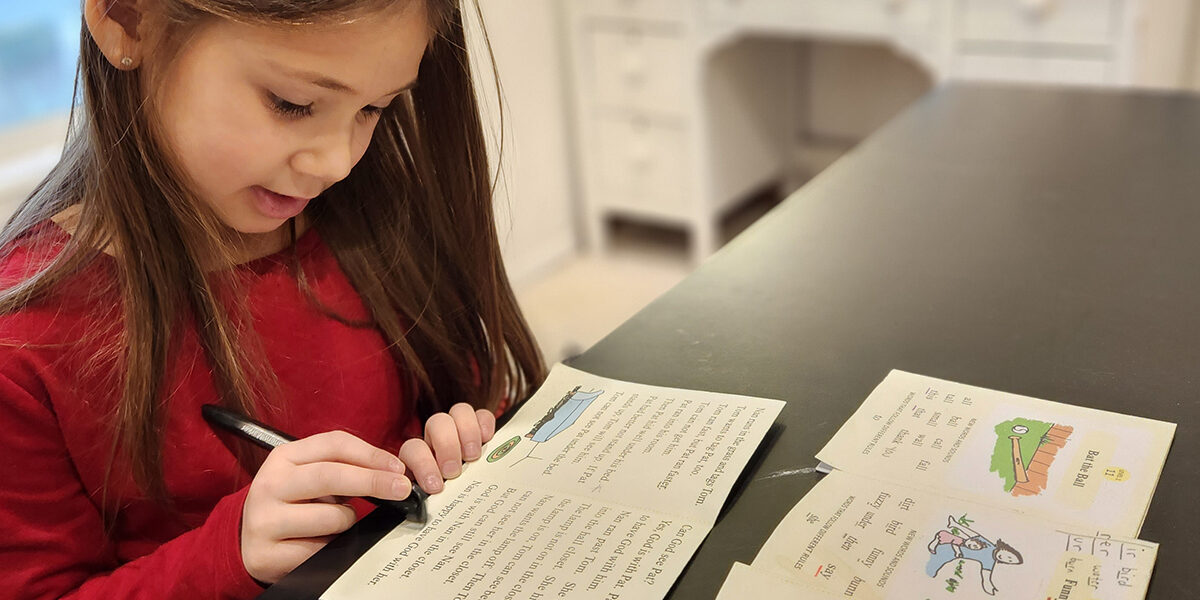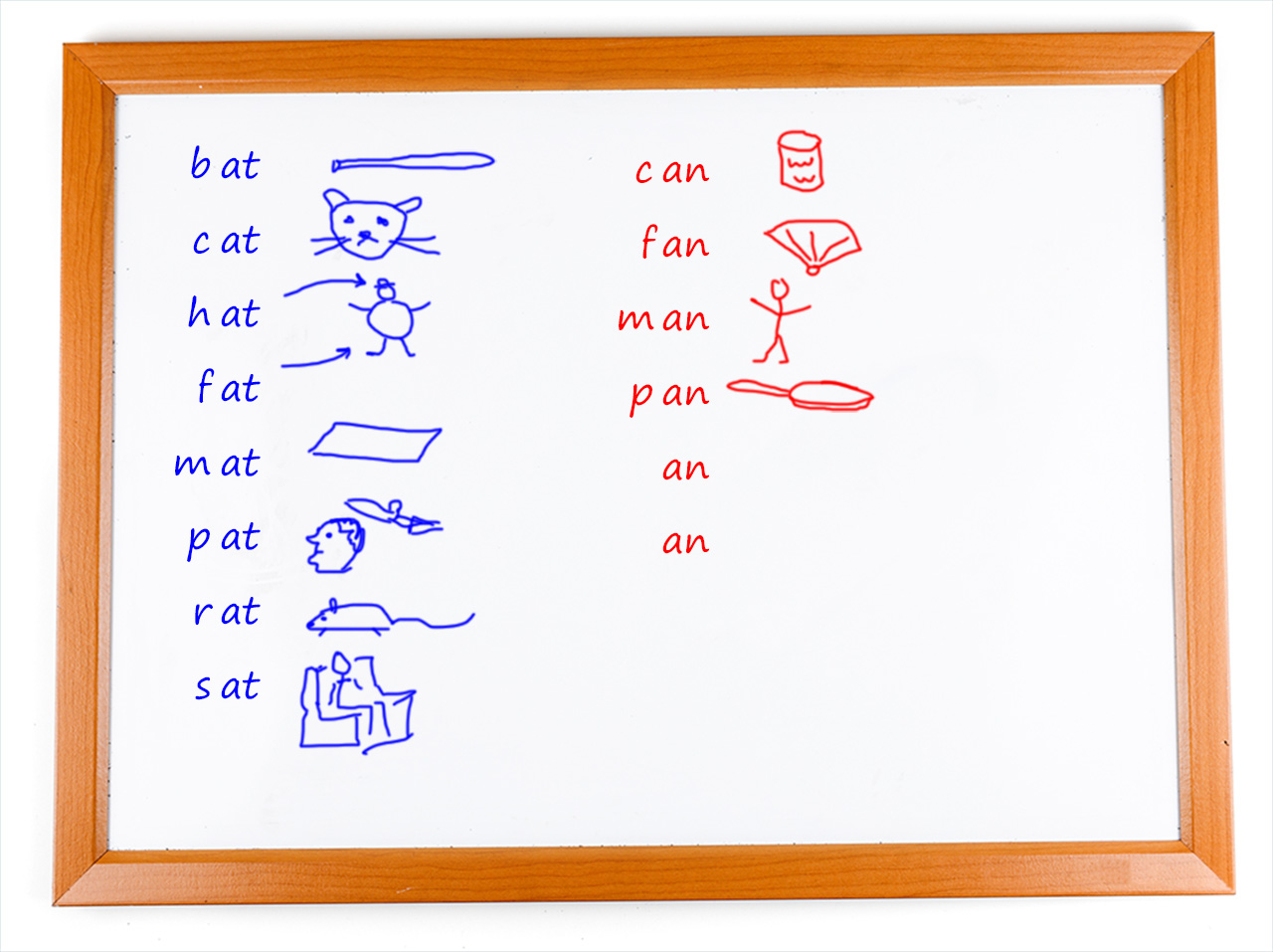Tips for Easily Distracted or Reluctant Readers

Learning to read is an exciting time, but it can also be challenging. No child learns to read in exactly the same way or at the same pace. Some learn early, others learn late; some virtually teach themselves, and others struggle for a long time before the skill of reading “clicks.”
One of the most common challenges is for children to have trouble sitting still and focusing on learning to read, since they are more interested in active, hands-on play. Many children also become discouraged if their initial struggle to read doesn’t yield results as quickly as they expected.
Little Stories for Little Folks is designed to appeal to both these kinds of readers by “cutting to the chase” and moving quickly to reading actual stories, without excessive drill. The interest of easily distracted readers is held by engaging stories about Catholic children like themselves, and the fold-up format of the booklets gives discouraged children a feeling of success in reading a “whole book.”
For easily distracted or reluctant readers, it can be helpful to adapt the lessons in Little Stories for Little Folks to make them even more engaging. You may also wish to keep the lessons short, perhaps no more than 10 minutes at a time. Below are ideas for each of the three distinct stages in learning to read.
Stage 1: Learning the names and primary sound of each letter of the alphabet

It is important that a child master both the names of all the letters (with the possible exceptions of q and x) and their sounds before beginning to read the little booklets. Little Stories for Little Folks provides flashcards and directions for mastering the letters and sounds, and we also highly recommend I Can Find Letter Sounds (for preschool) and Little Folks’ Letter Practice (for kindergarten).
Active Learning Games
When your child is learning the alphabet, use the Active Learning Games (Skip to My ABCs!, Simon Says, ABC Path, etc.) explained on pages 21-22 of Little Stories for Little Folks. Directions for these Active Learning Games can also be found at the beginning of I Can Find Letter Sounds.
Searching for the Letter
Depending on his interest or reluctance, your child might skip the ABC flashcards for a time, and instead be guided to look through newspaper grocery ads to identify the initial consonant sounds of sale items: “mmm—m—meat,” “kuh—c—carrots,” “luh—l—lettuce,” and more.
This can also be done with magazines, encyclopedias, or library books, particularly if the library book is chosen because it includes the non-mastered sound. For example, if he can’t remember the sound of “d,” pull out a simple story about dogs and guide him to find words that begin with “d.”
You can also have your child go through the cupboards, refrigerator, or his toys to locate items that begin with the letter and sound he is trying to learn. When he finds one, you might reward him with a tiny chocolate chip or a similar small treat.
My Truck Is Loaded with the Letter R
As your child works to learn the sounds of the letters, focus on the letters that he has not yet mastered. A good way to do this is by playing the “My Truck is Loaded With…” game. If your child is trying to master the sound of R, tell him, “My truck is loaded with the letter R. What can you find in this room that can be loaded on our truck?” Then give him the opportunity to find red things, a radio, rocking chair, rug, etc. This is also an excellent car game.
Refrigerator Magnets
A final tip: try using refrigerator letter magnets or rubber alphabet puzzles to practice sounds and letters. It’s best to use lower case letters.
Stage 2: Learning to blend sounds
After learning to sound out individual letters, the next step in reading fluency is to recognize that individual letters are very commonly paired into blends. That “speeds up” the reading process.
Recognizing these blends—and being aware of how the blends are paired with other word combinations—eventually leads to instantaneous recognition of whole words. Little Stories for Little Folks teaches phonetic blends through the manipulation of Word Family Cards and Consonant Columns. By this means, the child hears, sees, and touches basic phonetic blends and learns to put them together to make simple words.
If your child is using the Word Family Cards and Consonant Columns in Little Stories for Little Folks but is still struggling with the concept of blending sounds, you can try an alternative approach to teaching sound blends. Sometimes just a tiny shift in approach will turn on the light of understanding. This more active approach will also be helpful for a child who is easily distracted.
Use a chalkboard or dry-erase board

First, on a dry-erase board, chalk board, or sheet of paper, write “at” at least five times in a column going down the board or page. With your child, sound out “a” and then “t.” Then blend just these letters: go down the column and read each “at” so he can practice and see that each “at” in the column makes the same sound.
Next, return to the top of the column and print a “b” in front of the first “at.” Sound out “bat,” discuss what a bat is, and then draw a bat next to the word. Praise your child for his efforts.
After that, print a “c” in front of the next “at,” sound out “cat,” and draw a cat next to the word. Continue like this down the column of “at.” Use the Word Family Lists on page 13 of Little Stories to quickly identify which words to use. You might have the child act out each word he reads; for instance, using a bat and petting a cat. Spend only 10-15 minutes on this activity at a time, spreading it out over several days.
When you have exhausted the possible words in that word family, you have a complete list for practice. Have the child sound out the very first word only. Then remind him, “We know that ‘-at’ says ‘at,’ so we don’t need to sound it out any more on this list. The only sound that will change on the list is the first letter.” Have him read through the entire list. There should be no sounding out at this point, other than emphasis on the initial consonant: “B-at: bat! c-at: cat!”
Lastly, save the “at” list to practice on succeeding days, and start a new word family list, using the list on page 13 of Little Stories for Little Folks. As your child recognizes word families from the previous days, drop those families that he has mastered and focus on those he has not.
Step 3: Reading the stories
The final step in teaching your child to read is to help him listen for sounds and blends in the Name Game as he begins to read his first simple phrases and stories. Here are some tips for keeping it “light” for reluctant or easily distracted readers.
Introduce the story
When introducing a new story, read the “New Words and Sounds” together, as well as the “Words That Follow Different Rules,” but save the story for the next day. That way the child is exposed to new words and better prepared to read the story the next day.
It could also be helpful to have your child play the Name Game before reading the story instead of afterwards. Have him practice sounding out the new words he has created in the Name Game. After the first word in the list, he should not need to sound out each letter, just the first consonant.
Discuss before reading
When you are ready to start reading a new story, pique your child’s interest by discussing what the story is about. For example, in “Mud on the Rug,” you might talk about bugs the child has caught, or a time that mud was tracked into the house. Discussion ideas to introduce each story are included in Little Stories for Little Folks.
Then, keep the active participation going. When first introducing a story, you can try alternating reading sentences with your child. He reads the first sentence, you read the second, he reads the third, and so on
Use refrigerator magnets
Your child may enjoy spelling the “New Words and Sounds” and “Words That Follow Different Rules” with lowercase magnetic letters on the refrigerator. Doing so will involve more senses: hearing, seeing, and touching. It will also keep the words out and visible for casual practice as you move about the kitchen making lunch or dinner.
Write “treat” messages to your child
While you are working through the Level 1 booklets in Little Stories for Little Folks, use refrigerator letter magnets to write simple “treat” messages to your child. For example, “Joe can get the gum. Have fun!” Be sure to limit the communications to his name and those phonics sounds that he has already learned: words using the short vowel sounds of a, e, i, o, and u. You can also use “Words That Follow Different Rules” once they have been introduced in Little Stories (a, the, have, etc.)
Then help him to respond simply, also with the magnets, e.g., “I got the gum.” He can even re-use some of the words that you’ve already made, e.g., “the gum.” Don’t worry about spelling at this point. The idea is to give the child a reason to read and sound out words.
Double back
And if your child is struggling with a particular story? Drop back a few stories so he experiences success again. When you attempt the challenging story again, read only half the story per day. When he is ready to read the second half, briefly review the first half of the story.
Keep an eye on the time
As always, keep an eye on the clock and monitor at what point your child becomes restless. If it’s at five minutes, limit reading time to five minutes for now. As he experiences success, gradually extend the time by just a few minutes, up to perhaps 10 minutes.
Keep reading sessions short for children under age six or with a child who has a short attention span. However, it is important to give it at least five minutes! If the child has trouble sitting this long, a timer might be set for five minutes. Tell the child that “the timer will tell us when we’re done,” and then keep going with the exercises or reading until the timer rings. Praise your child when he makes it through those five minutes!
Resist the temptation
One last bit of advice. Teaching your child to read is one of the most beautiful parts of homeschooling. You are opening the door of knowledge to him! Resist the temptation to fall into the pressured mindset that he is behind and needs to catch up. That could lead you to push him through the lessons faster than he is ready for, which might cause him to see reading as a chore.
It can be tempting to think, “We’ll just work a little longer today and get one more lesson done,” but remember that it’s more important for your child to process what he has learned and be fresh and ready to learn more tomorrow. Kids need time to play and “be kids,” because this is when children process what is learned in formal education.
Remember, developmental readiness to read is different from child to child, with some ready by age three and others ready at age eight or later. Go at your child’s pace. Time spent building a strong foundation in reading will yield rich rewards later.
The photo at the top of this article was submitted by Melissa from Washington. She says, “Fridays are review day! My daughter (6) gets to read her favorite story of the month from Little Stories for Little Folks. She looks forward to the next week’s story with an eager heart.”
About Nancy Nicholson
Nancy Nicholson is one of the founding authors of Catholic Heritage Curricula. Equipped with an abundance of God-given talent, a major in Secondary Education–English, and years of experience homeschooling her own children, she has written over thirty educational titles, beginning with Little Stories for Little Folks. Her unique ability to develop programs and workbooks that “fit” both advanced and struggling students is due to her experience raising children of different ability levels and learning styles: two of her children are developmentally challenged, while another went on to graduate from Cornell and is now a college professor.
Related Blogs
If you enjoyed this article, you might be interested in the related articles below.
Favorites
Explore CHC’s top favorites! From art to literature, science to hands-on religion, CHC has materials to enrich every Catholic homeschool.



















